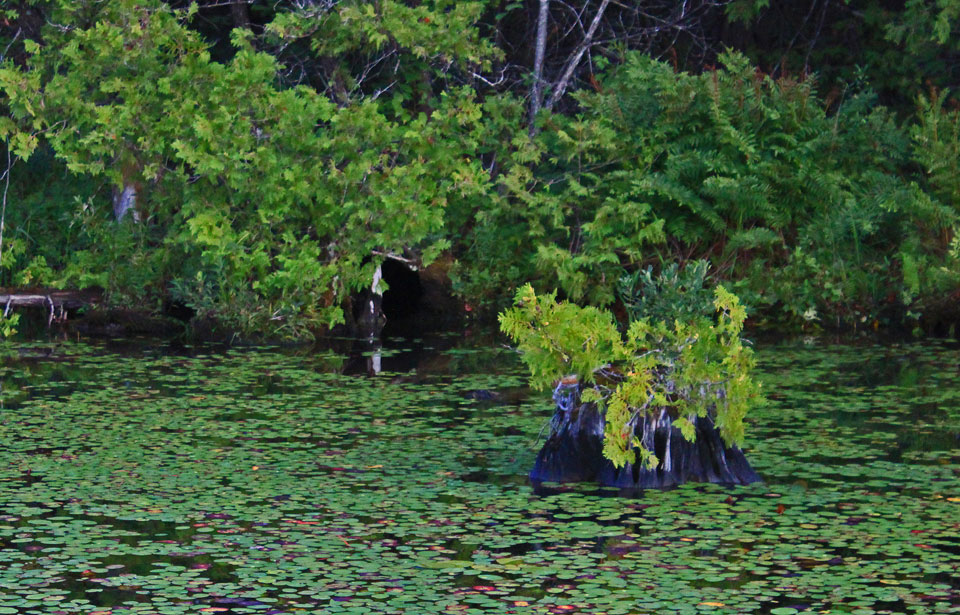Muscle out Zebra Mussels
Since 1988, zebra mussels have spread rapidly through the Great Lakes, clogging water-pipes and smothering fish spawning grounds.
These black and white striped molluscs consume large quantities of plankton — a vital link in the food web of any aquatic habitat. Unfortunately, zebra mussels have few natural enemies in Canada, and there is no known environmentally safe way to get rid of them.
Recent reports show that this aquatic menace is starting to spread into other water-ways. But all of us can take steps to help curb the invasion. Slowing the spread of zebra mussels now will buy time for scientists who are looking for safe and effective ways to control them.
Use the following check-list to do your part in the battle against zebra mussels:
- Be informed and tell others about the dangers of these mollusc invaders.
- Clean any boat thoroughly before moving it from an infested waterway to another body of water.
- If you see zebra mussels on your boat, remove them with a paint scraper before leaving the vicinity of the infested waterway. Be very careful — zebra mussel shells are sharp and can cut you.
- If it’s hot and dry, leave your boat out of water for two or three days, and the mussels will die. Some may drop off; some may need scraping. Dispose of them in a garbage container or dump them a good distance away from sewers or waterways.
- Never use Great Lakes water to transport live bait and never transfer Great Lakes water to another body of water.
- If you’re already inland and have a boat or other equipment that may contain Great Lakes water, clean the equipment and dump the water on dry land, well away from any water supply.
Root out Purple Loosestrife
A strikingly beautiful wildflower, purple loosestrife is becoming a serious threat in Canada. This exotic invader crowds out native plants and destroys food and habitat for wildlife. It blooms from mid-July to the end of August in all kinds of wetlands.
Purple loosestrife is now firmly entrenched in southern Ontario, Quebec, and Manitoba and is spreading into Eastern Canada. There are reports of the plant in British Columbia, Alberta, and Saskatchewan, where concerned groups are monitoring its spread. It seems that physical or chemical control methods can only temporarily limit the invasion of this wildflower. However, researchers in the United States and Canada are investigating the use of beetles to control the plant biologically.
Take the following steps to help curb the spread of this alien invader in your schoolyard and your community:
- Never transplant purple loosestrife to school, home, or cottage gardens.
- To help control smaller patches, you can hand-pull younger plants.
- Dig out older plants, especially those in bogs and deep organic soils.
- Avoid breaking off roots or they’ll just re-sprout. They can extend 30 cm or deeper into the soil.
- Never mow purple loosestrife. Cut plant matter may re-root.
- All pulled parts must be removed, dried, and, if possible, burned. Plants can re-root from the tiniest piece of root, stalk, leaf, flower, seed head, or even bits dropped from a wheelbarrow.
- Place all plant matter in a carton or at a protected site so it can dry completely, without danger of being spread by wind, water, humans, or animals. When burning purple loosestrife, make sure all plant matter is destroyed. When packaging, wrap the plants securely in a plastic bag or container to avoid contamination at landfill sites. Before composting, make sure all matter is totally dried so that living remnants aren’t spread to other gardens or landscaping sites.
- All work should be completed by mid-summer – before the flowers go to seed. Seed formation starts at the bottom of the flower and progresses to the tip. Before taking action, check to see that there are no ripe seeds. If any are present, and there is a chance that they may be spread, put the project on hold until next year.
- Don’t be confused by purple loosestrife look-alikes, such as fireweed and blue vervain. Make sure you have the right plant.
- Where plant digging isn’t possible, removing flower heads will help slow the spread of seeds. Simply cut the head in mid-summer before the flower goes to seed. Remove and destroy the flowering head as outlined above.
- Inform others in your community about the purple loosestrife predicament and what they can do about it.
- Monitor the site for several years. New shoots may come up from root remnants. Any new growth should be dealt with quickly.



